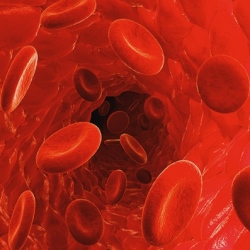
A team of researchers has made a breakthrough in our understanding of how cancer cells are able to spread around the body and form deadly new tumors. The team found that two proteins work together, exhibiting an unusual behavior that helps keep the cells alive.
While our understanding of cancer is constantly improving, and there are numerous promising new treatments in the works, we’re still a long way from having a true cure. One of the most difficult aspects of the disease is the way that it’s able to move around the body, known as metastasis. Doctors are often able to kill a patient’s original tumor, but metastasis causes secondary growths in other parts of the body, making the condition much more difficult to treat.
The problem is that we don’t fully understand how cancer cells are actually able to stay alive once they break away from a tumor. When attached to a tumor, they’re relatively protected, but when free-floating, they should be more vulnerable to the body’s defenses. This new research identifies two molecules central to their survival, providing researchers with new targets for future treatments.
The researchers studied cancer cells in cultures, mice and zebrafish. Carefully watching for changes in the cells, the team spotted a type of molecule, called an integrin, behaving very strangely indeed.
Integrins are proteins that help cancer cells to attach to the network of proteins that surround them, letting them survive and grow. However, the new observations revealed that when the cancer cells break away from a tumor, an intergrin called beta-1 changes. It no longer works to help stick the cell to its surroundings, but instead gets to work inside the cell.
Beta-1 was observed to team up with another protein, known as c-Met, which is central to numerous processes, including embryonic development and wound healing.
Having joined forces, the two proteins make their way to a part of the cell which is normally used to dispose of and recycle cell material. Together, the molecules use the location for a different purpose, sending signals to the rest of the cell that help it resist death while in its more-vulnerable, floating state.
To confirm their observations, the researchers looked at both lung and breast cells, and found that metastases were less likely to form when the two proteins were prevented from getting to the signaling location, or were blocked from joining up inside the cell in the first place. In the long run, the researchers believe that this new understanding could lead to the development of improved therapies that help slow or even prevent the spread of tumors.
"This discovery opens new doors for scientists to try to stop breast cancer spreading and to ultimately save lives, and we look forward to future developments in this exciting area of research," says Delyth Morgan from Breast Cancer Now, one of the organizations that funded the research.
